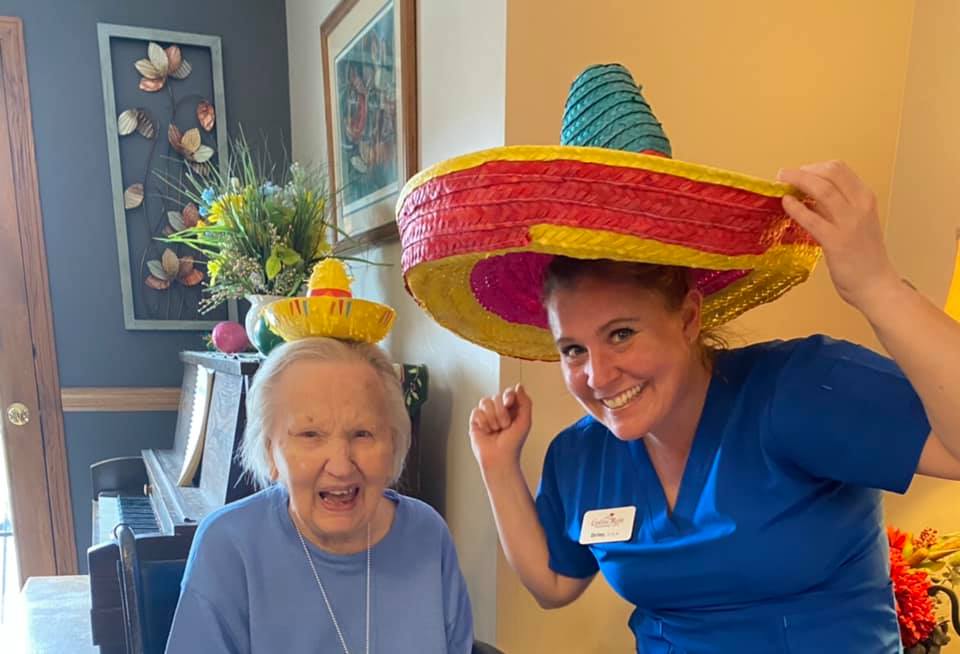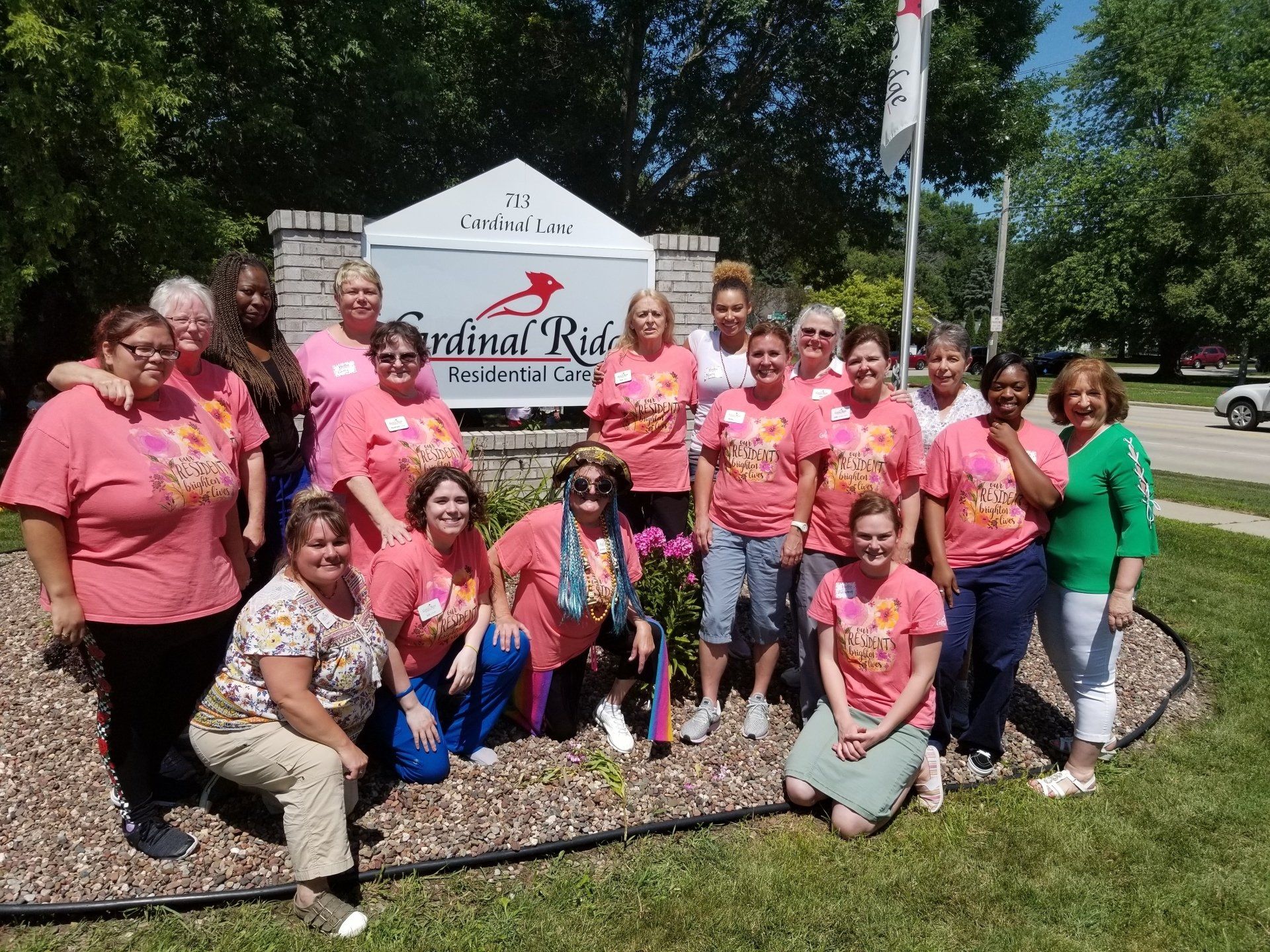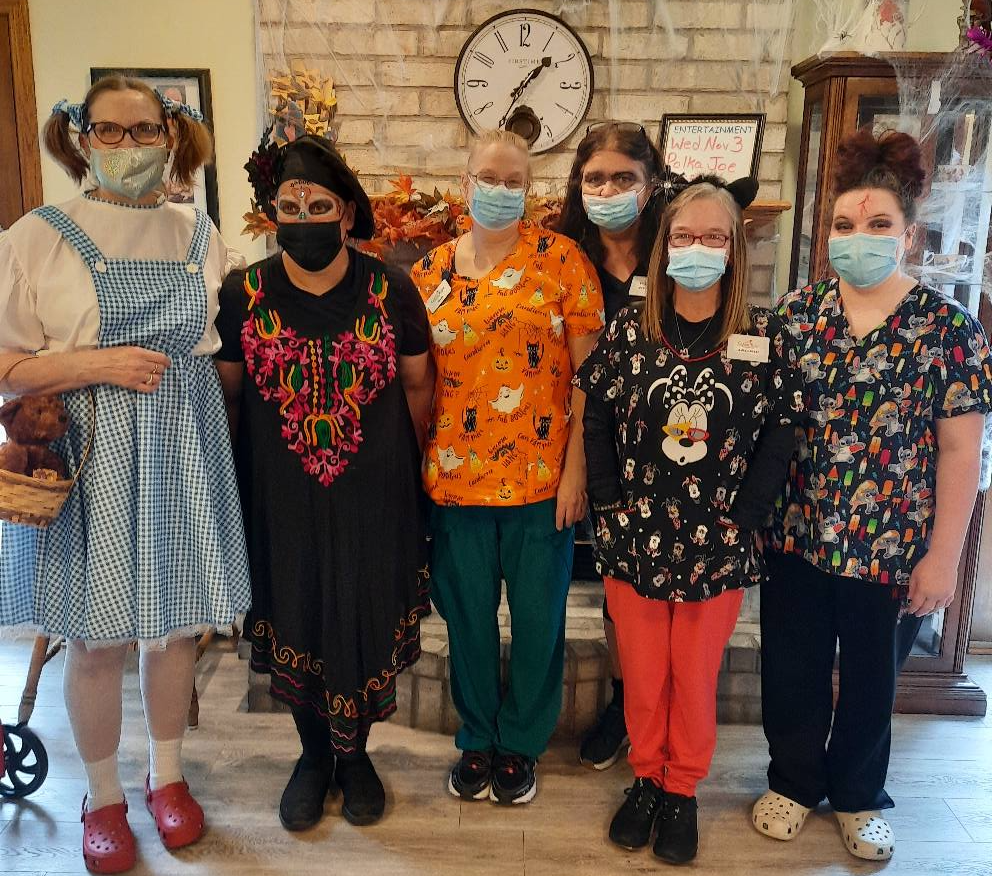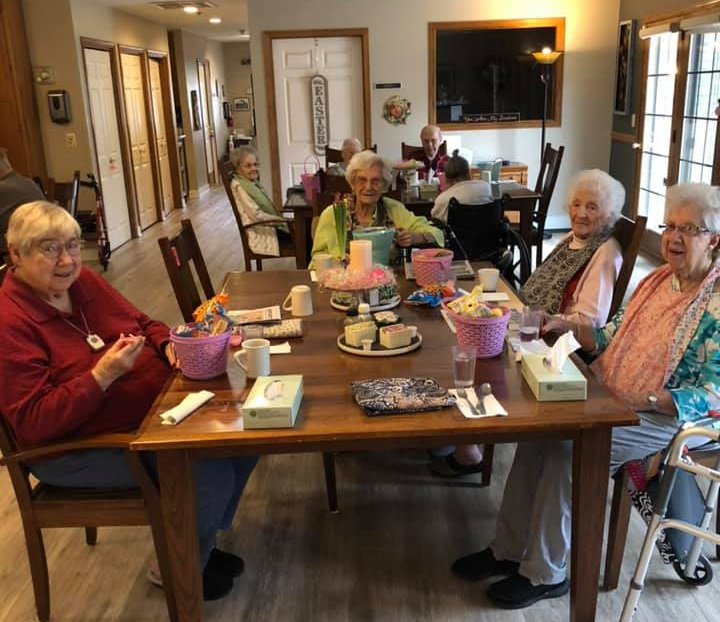About Cardinal Ridge Residential Care
FREE Consultations | Highly Trained Staff | Affordable Monthly Fee
FREE ConsultationsHighly Trained StaffAffordable Monthly Fee
The Local Leader in Assisted Living
In 1991, Cardinal Ridge Residential Care began offering an alternative for seniors who could no longer live at home yet did not require full-time skilled nursing home care.
Over the years, Cardinal Ridge has grown to become the leader in the assisted living industry here in Wisconsin. Our goal is to provide the support our residents need to live full and satisfying lives while helping them maintain their independence and dignity.
Our communities operate as a family-owned business, giving our staff the flexibility to customize our assisted living services to reflect each resident's needs and interests. As a result, each community maintains its own unique personality that makes it special to the residents and their families.
For more information about our facilities, or to schedule a FREE consultation, contact either of our two locations in Green Bay
or Sturgeon Bay, WI. Se habla español!





Our Philosophy
Everything we do at Cardinal Ridge is based on our goal of providing the support our residents need to live full and satisfying lives while helping them maintain their independence and dignity. Our care-giving philosophy is based on the following key values:
Respect
We sincerely respect our residents and always honor their rights to privacy and dignity.
Community
Our homes are community-based residential facilities where we foster a sense of community among staff and residents alike. We work hard to ensure that our residents feel as if they are at home. Additionally, our locations are more spacious than any others in the region.
Choice
We encourage our residents to live life to its fullest by offering them a wide range of senior care programs and the opportunity to meet their fellow residents.
Assisted living
Our staff helps residents meet people with similar interests, giving them the chance to get involved in new activities, taking them to their medical appointments and providing daily assisted living services. There are all ways that their health improves. When their health improves, they can experience a richer, more fulfilling life with greater independence.
Teamwork
Our staff, residents and their families and friends are all part of the team at Cardinal Ridge. We instill in each team member a belief that their individual efforts and contributions make a big difference to the residents' well-being.
Our History
Cardinal Ridge Residential Care was founded by Larry Anderson and Robert Margraf in 1991. They saw a need for a more affordable and appealing senior living alternative for individuals who did not require the full-time care of nursing homes.
Karen Bain, our administrator, suggested the name Cardinal Ridge Residential Care, which is a combination of the addresses of the two communities we own, one in Green Bay
and the other in Sturgeon Bay, WI.




The Assisted Living Industry
With the ever-growing increase in our nation's elderly population, the assisted living and retirement community industry in America has grown rapidly. Yet, many people are still confused about the difference between "assisted living" and "nursing homes."
Assisted living – community-based residential facilities
Assisted living is a less costly, more home-like senior housing option for individuals who need some assistance with daily activities, but do not require the full-time care of a nursing home facility.
Many types of people choose to live in assisted living residences, both young and old, and some suffer from Alzheimer's disease, dementia or other memory disorders. Others may need help with incontinence or mobility.
Our assisted living communities offer private rooms with bedrooms and bathrooms, community dining rooms and scheduled social and recreational programs, as well as varying levels of assistance with the activities of daily living.
The cost of assisted living care is considerably lower than skilled nursing home care. Residents, or their family members, usually pay for assisted living care. However, care may be reimbursed by an individual's health or long-term care insurance policy, depending upon the specifications of the policy.
Skilled nursing home care
Skilled nursing home care facilities are designed for residents who require 24-hour supervisory nursing home care. Until recently, they offered one of the only forms of senior care. Skilled nursing home facilities are staffed by registered nurses, licenses practical nurses and certified nursing assistants.
In a skilled nursing home, residents live in single or shared rooms and usually dine together in a community dining room.
Our Executive Management
Larry Anderson
Chairman of the Board/Co-CEO
Larry Anderson is one of the founders of Cardinal Ridge Residential Care and continues to be actively involved in the management of our homes.
Robert Margraf
President/Co-CEO
Robert Margraf is one of the founders of Cardinal Ridge Residential Care and continues to be actively involved in the management of our homes.

Allison Newkirk
Administrator
Allie has over a decade of assisted living management experience and 20 years experience in long term care. She graduated with her associates degree in Nursing and serves the needs of our elderly population by overseeing corporate compliance, licensing standards and requirements, operational policies and procedures for the company, and financial management of the communities in Green Bay and Sturgeon Bay.
